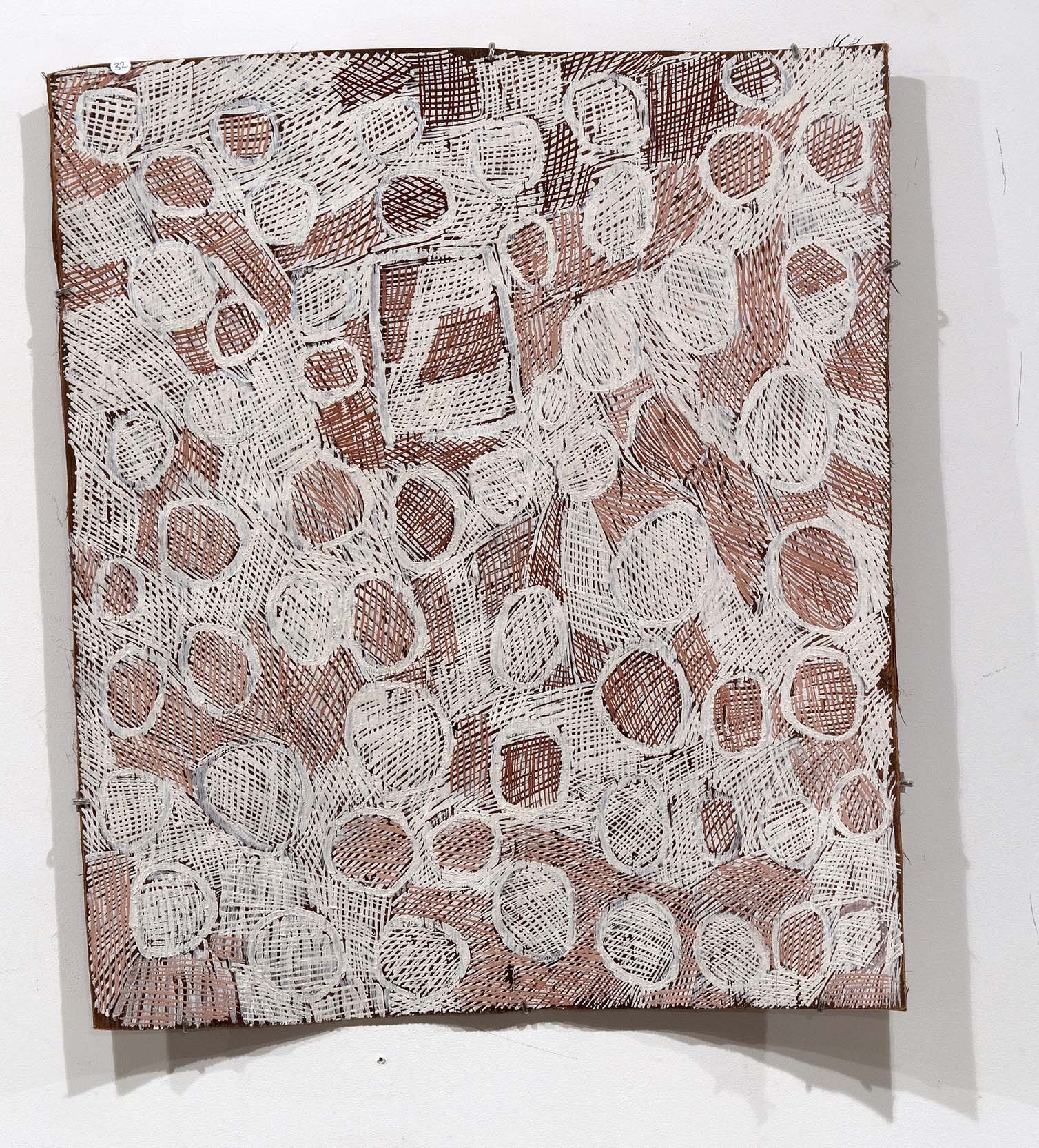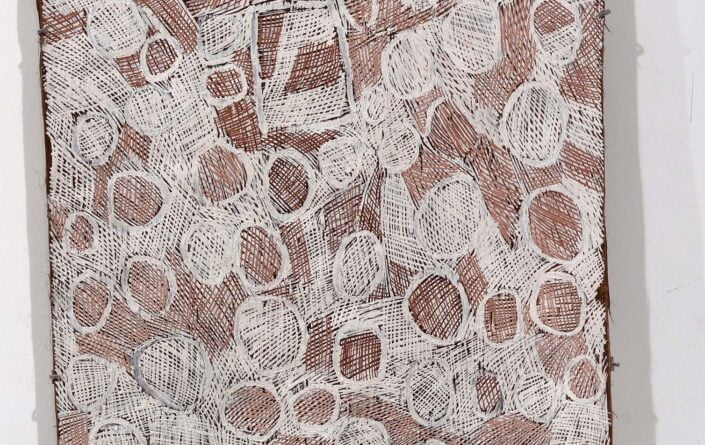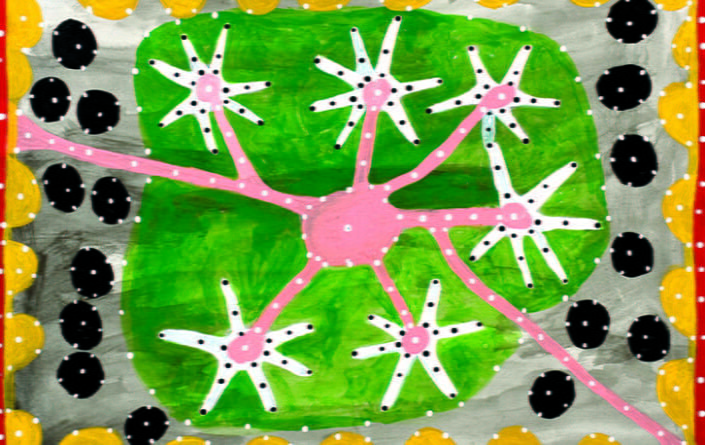Nyapanyapa Yunupingu
Nyapanyapa Yunupingu’s recent practice takes a strikingly divergent approach to that of many of her Yolngu contemporaries. Initially recognised for drawing personal narratives and memories into her bark paintings and prints – a sphere usually reserved for ancestral narratives and clan related iconography – she has since taken a step towards what we might categorise as outright abstraction.
Characterised by an absence of the minytji (sacred clan designs), which places the work of fellow Yolngu artist Djambawa Marawili within a clearly defined network of clan relations and ancestral responsibility, the content of Yunupingu’s work lies elsewhere. An early group of her ‘abstract’ paintings were titled Mayilimirriw, a Yolngu Matha word that translates literally as ‘meaningless’. This sense of ‘meaninglessness’—which is of course relative—challenges the assumption that all Indigenous art is embedded with specific cultural meaning. It asks us to consider the different ways that meaning and visual language might be sustained, or altered, between cultures.
The works included here comprise finely brushed line work that extends across each painted ground; a shift in palette, perhaps from white to red or yellow, or the inclusion of a square or circle, creates haphazard compositions and suggests aspects of both the built and natural environment of her North-eastern Arnhem Land home.
December 2013Nyapanyapa Yunupingu’s recent practice takes a strikingly divergent approach to that of many of her Yolngu contemporaries. Initially recognised for drawing personal narratives and memories into her bark paintings and prints – a sphere usually reserved for ancestral narratives and clan related iconography – she has since taken a step towards what we might categorise as outright abstraction.
Characterised by an absence of the minytji (sacred clan designs), which places the work of fellow Yolngu artist Djambawa Marawili within a clearly defined network of clan relations and ancestral responsibility, the content of Yunupingu’s work lies elsewhere. An early group of her ‘abstract’ paintings were titled Mayilimirriw, a Yolngu Matha word that translates literally as ‘meaningless’. This sense of ‘meaninglessness’—which is of course relative—challenges the assumption that all Indigenous art is embedded with specific cultural meaning. It asks us to consider the different ways that meaning and visual language might be sustained, or altered, between cultures.
The works included here comprise finely brushed line work that extends across each painted ground; a shift in palette, perhaps from white to red or yellow, or the inclusion of a square or circle, creates haphazard compositions and suggests aspects of both the built and natural environment of her North-eastern Arnhem Land home.
December 2013



